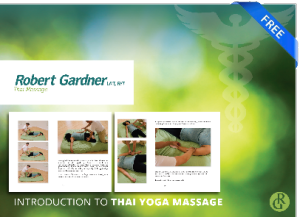What is Thai massage? pt.3
Thai massage is bodywork designed for those who meditate or have the desire to do so. The bodywork has immense capability to help the human body heal but one of its additional long term the long term benefits is that it allows the receiver to drop in and tune into their own biorhythms.
Everyone develops muscle tension, small misalignments and imbalances which Thai massage helps unwind. Having your brain stop telling muscles to contract, you can then relax, ground and move more deeply into a meditative space. I’ve seen it time and again with clients who report surprisingly that they weren’t tired at all after a session and even had some trouble sleeping. Usually they report they felt so good they wanted to keep going and doing things. That same energy, can be channeled into meditation.
Instead of feeling lethargic after Thai massage most report feeling light, unencumbered and having increased feelings of mental well being. Insight would be a strong word but clearing muscle tension in the body allows one to see more clearly the issues at hand to focus and deal with them. As I write this I realize the depth and scope of the bodywork I’ve chosen to focus my career on. It’s got great depth.





